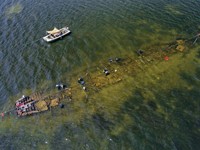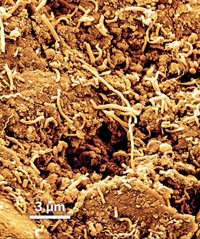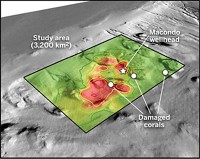Advertisement
Grab your lab coat. Let's get started
Welcome!
Welcome!
Create an account below to get 6 C&EN articles per month, receive newsletters and more - all free.
It seems this is your first time logging in online. Please enter the following information to continue.
As an ACS member you automatically get access to this site. All we need is few more details to create your reading experience.
Not you? Sign in with a different account.
Not you? Sign in with a different account.
ERROR 1
ERROR 1
ERROR 2
ERROR 2
ERROR 2
ERROR 2
ERROR 2
Password and Confirm password must match.
If you have an ACS member number, please enter it here so we can link this account to your membership. (optional)
ERROR 2
ACS values your privacy. By submitting your information, you are gaining access to C&EN and subscribing to our weekly newsletter. We use the information you provide to make your reading experience better, and we will never sell your data to third party members.
Biochemistry
Mariana Trench hosts hydrocarbon-munching microbes
Discovery provides a glimpse of the unusual biochemistry happening 11 km below the ocean surface
by Laura Howes
May 2, 2019
| A version of this story appeared in
Volume 97, Issue 18
In the western Pacific Ocean, where the Pacific plate meets the Mariana plate, you’ll find the deepest place on Earth, the Mariana Trench. The trench runs for 2,550 km along the ocean floor and its deepest spot, evocatively named Challenger Deep, is about 11 km deep. To get down there, you need specialized equipment that can survive the crushing pressures. But once at the bottom, there is still a lot to discover.
In 2016, researchers lowered special water-sampling bottles from a surface ship down to Challenger Deep. Using DNA sequencing to characterize bacteria collected in these bottles, researchers in China, Russia, and the UK have found that the Mariana Trench is rich in hydrocarbon-munching bacteria (Microbiome 2019, DOI: 10.1186/s40168-019-0652-3). They confirmed their findings by isolating some of the bacteria and showing that the microbes could metabolize C18–C20 alkanes in the lab.
Scientists don’t know a lot about life in these very deep areas, but they do know the trenches are biological hot spots, says Ronnie N. Glud at the University of Southern Denmark, who was not involved in the study. “Why is it,” he asks, “when we move into the trenches that we have a much higher biological activity than we have elsewhere in the deep ocean?” Perhaps, he says, the hydrocarbons that accumulate in the trenches can be an energy source to sustain life.
“We know more about Mars than the deepest part of the ocean,” said Xiao-Hua Zhang of the Ocean University in China, who led the study, in a statement. More research is needed to understand life in this unique environment as well as the role these bacteria could play in cleaning up oil in the ocean, as do similar microbes found in the Gulf of Mexico.
Update
On Aug. 25, 2020, this story was updated to clarify that the quote from Xiao-Hua Zhang came from a University of Anglia press release about the Microbiome study.





Join the conversation
Contact the reporter
Submit a Letter to the Editor for publication
Engage with us on Twitter